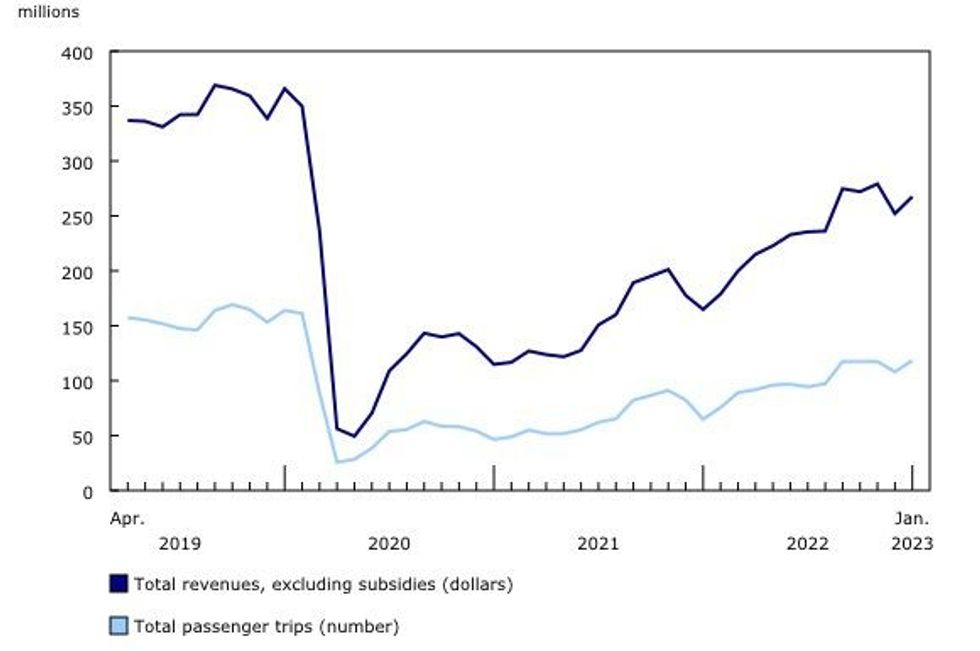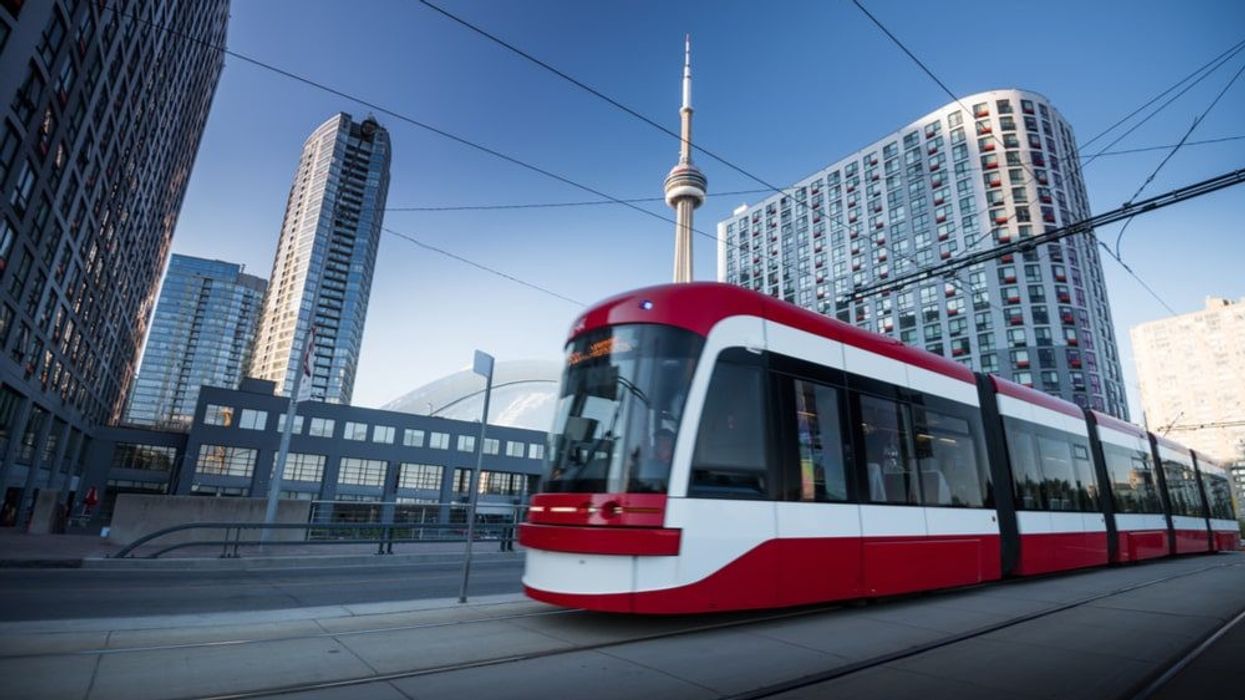Strong job growth and a reinvigorated return to the office propelled ridership on Canada's urban public transit networks to their highest level since March 2020.
According to data from Statistics Canada, an estimated 118.4M trips were taken on urban transit networks across Canada in January 2023. The figure represents 73.6% of January 2019 ridership levels, the highest rate of recovery since the onset of the pandemic.
Although ridership fell short of the pre-COVID benchmark by about 42.5M rides, it has increased significantly (82.7%) over the course of a year. Just 64.8M trips were taken in January 2022 as the Omicron variant kept Canadians at home and off of public transit.
On a monthly basis, ridership increased 9.6% from December 2022; pre-pandemic, trips typically increased 8% between December and January as workers and students returned from the holiday break.

The rise in ridership can be attributed, in part, to strong job growth. According to StatCan's Labour Force Survey, the unemployment rate remained near a record-low of 5.0% in January 2023.
Industries that require workers to be on-site, including wholesale and retail trade, healthcare and social assistance, and construction, led the employment gains, with the number of workers rising between 1% and 2% per sector month over month.
Although the proportion of workers commuting in January 2023 remained 9.3% below the same month in 2020, the figure was up 10.5% annually and 3.1% on a monthly basis.
With Canadians back on buses, subways, and streetcars, transit agencies' operating revenues spiked to $267.6M in January, an annual increase of $102.8M. The figure represents 76.5% of January 2019 levels.
The Toronto Transit Commission will increase fares by 10 cents in April, while Vancouver's TransLink hiked fares by 2.3% last July. Halifax Transit scrapped a proposed $0.25 fare increase earlier this month.





















